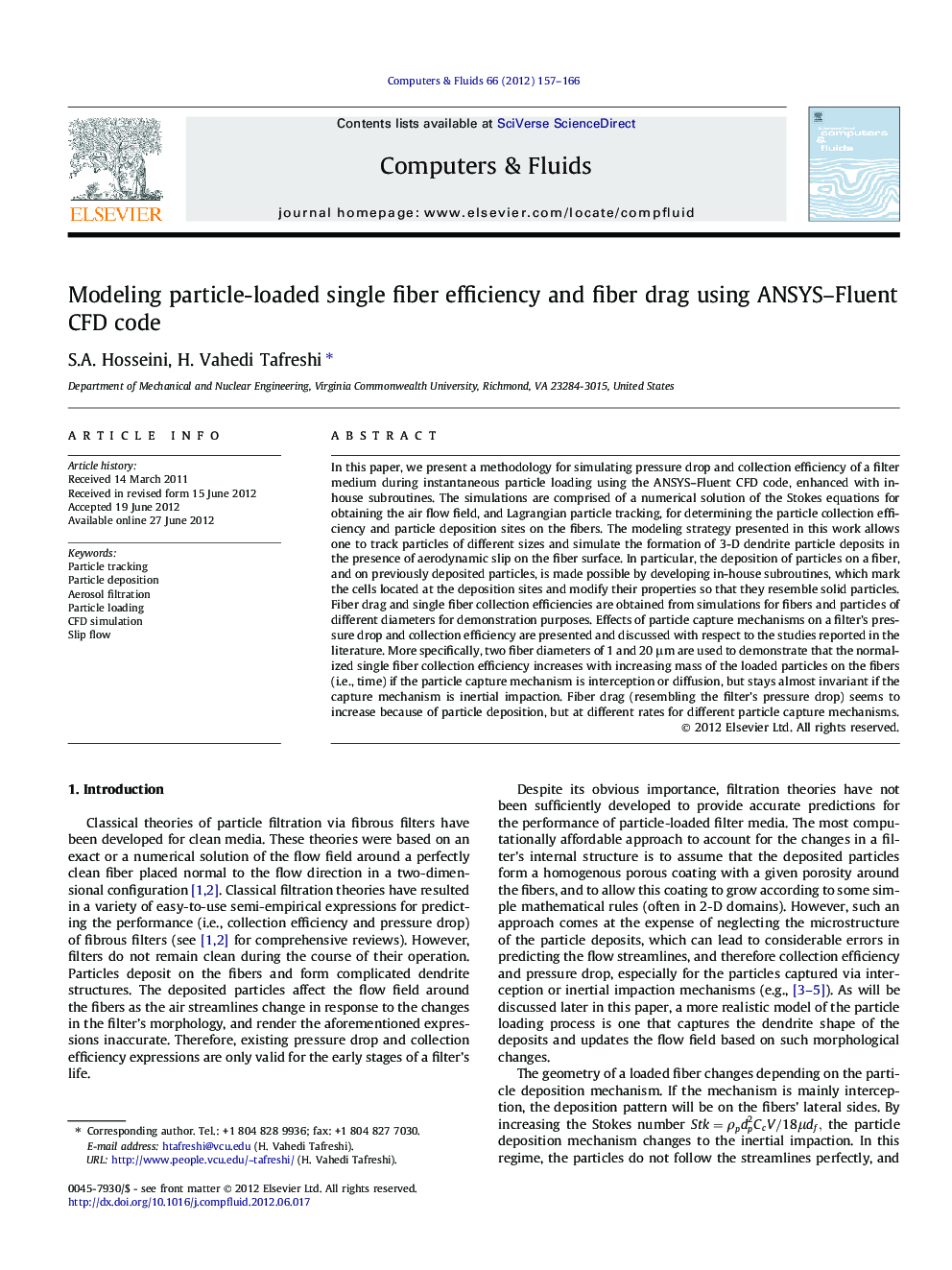| کد مقاله | کد نشریه | سال انتشار | مقاله انگلیسی | نسخه تمام متن |
|---|---|---|---|---|
| 762140 | 1462744 | 2012 | 10 صفحه PDF | دانلود رایگان |

In this paper, we present a methodology for simulating pressure drop and collection efficiency of a filter medium during instantaneous particle loading using the ANSYS–Fluent CFD code, enhanced with in-house subroutines. The simulations are comprised of a numerical solution of the Stokes equations for obtaining the air flow field, and Lagrangian particle tracking, for determining the particle collection efficiency and particle deposition sites on the fibers. The modeling strategy presented in this work allows one to track particles of different sizes and simulate the formation of 3-D dendrite particle deposits in the presence of aerodynamic slip on the fiber surface. In particular, the deposition of particles on a fiber, and on previously deposited particles, is made possible by developing in-house subroutines, which mark the cells located at the deposition sites and modify their properties so that they resemble solid particles. Fiber drag and single fiber collection efficiencies are obtained from simulations for fibers and particles of different diameters for demonstration purposes. Effects of particle capture mechanisms on a filter’s pressure drop and collection efficiency are presented and discussed with respect to the studies reported in the literature. More specifically, two fiber diameters of 1 and 20 μm are used to demonstrate that the normalized single fiber collection efficiency increases with increasing mass of the loaded particles on the fibers (i.e., time) if the particle capture mechanism is interception or diffusion, but stays almost invariant if the capture mechanism is inertial impaction. Fiber drag (resembling the filter’s pressure drop) seems to increase because of particle deposition, but at different rates for different particle capture mechanisms.
► A new method is developed for modeling 3-D dust-deposition on fibers.
► The method enhances capabilities of ANSYS–Fluent CFD code.
► Single fiber efficiency is predicted for dust-loaded fibers.
► Fiber drag is predicted for dust-loaded fibers.
► Reasonable qualitative agreement with published experiments is observed.
Journal: Computers & Fluids - Volume 66, 15 August 2012, Pages 157–166